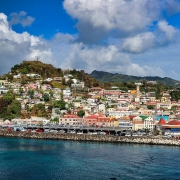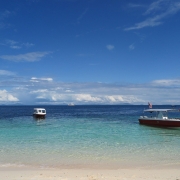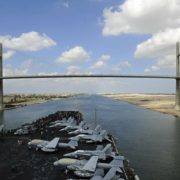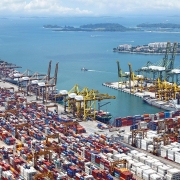How did ASEAN promote economic growth in the 1970s?
Topic of Study [For H2 History Students]:
Paper 2: Regional Conflicts and Co-operation
Source Based Case Study
Theme III Chapter 2: ASEAN Growth and Development of ASEAN: Promoting regional economic cooperation
How it all began: ASEAN Declaration
On 8 August 1967, five Southeast Asian nations signed the ASEAN Declaration in Bangkok to officiate the creation of a regional association. Within the Declaration, three out of seven objectives related to economic development.
For instance, the fifth objective states that member nations were to “collaborate more effectively for the greater utilization of their agriculture and industries, the expansion of their trade, including the study of the problems of international commodity trade”.
In the late 1960s, most member states of ASEAN were largely reliant on primary products. Malaysia was a key exporter of tin, natural rubber and palm oil. Thailand specialised in the production of tapioca and rice. Yet, regional economic cooperation was not at the top of the priority list, since the main export markets for the above products were outside ASEAN. This could be the result of differing stages of economic development among the ASEAN-5.
The ASEAN economies exhibit a mixture of the characteristics of the economies of the ‘North’ and the ‘South’. There is, on the one hand, the highly industrialised, affluent and small economy of Singapore, while on the other large, less affluent and rather dualistic economies of Indonesia, Philippines and Thailand. Then there is Malaysia which is medium-size, natural resource rich and relatively affluent; […]
Singapore, with its policy of virtually free trade, is already well-integrated with the rest of the world, while Indonesia, the Philippines and Thailand – all seeking to industrialise themselves – have high tariff and other trade barriers. Malaysia’s industrialisation strategy is also based on restricted trade, but the degree of such restrictions is lower. Given this mixture of structural characteristics, policies of trade liberalisation cannot be successful without greater co-ordination of industrial strategies of the member countries.
An excerpt taken from “ASEAN Into the 1990s” by Alison Broinowski.
Oil Shocks and The Bali Summit
The first oil crisis of 1973 had adversely affected oil-importing nations, such as Thailand and the Philippines. In addition, price fluctuations in the world markets made the attainment of economic growth unsustainable. ASEAN members began to contemplate on the need for a regional market to sustain industrialisation.
As such, Indonesian ministers (such as Widjojo Nitisastro) under Suharto’s leadership invited ASEAN leaders to attend a gathering in Jakarta in November 1975. This ‘Meeting of ASEAN Economic and Planning Ministers’ set the stage for the first ASEAN Summit in Bali in February 1976.
From the economic standpoint, the Bali Summit concluded with the signing of the ASEAN Concord. In consideration of the challenges posed by external shocks, the Concord sought to address the risk of supply shortages for food and energy.
One key initiative was the ASEAN Industrial Projects (AIPs) that required each member state to lead a joint venture with other members. The AIPs sought to address the lack of complementariness between ASEAN economies, thus facilitating economic integration. It was estimated that each project required an investment of up to US$300 million.
However, not all member states expressed enthusiasm towards the projects.
According to Widjojo Nitisastro, Indonesia had resisted all notions of trade liberalization and regional economic integration. Indonesia, he said, was more concerned with food, as well as energy, security and with the establishment of large-scale industrial projects. Widjojo believed that, if a country felt that trade liberalization was good for it, it would open up trade unilaterally anyway.
An excerpt taken from “Southeast Asia in Search of an ASEAN Community: Insights from the Former ASEAN Secretary-general” by Rodolfo Severino.
Musings of an ASEAN Free Trade Area
Yet, the attempts to promote regional economic cooperation in the 1960s and 1970s were arguably disappointing, given that intra-ASEAN trade levels remained low. In the case of the AIPs, only two out of five projects were implemented, namely the urea projects under Malaysia and Indonesia. The rest were eventually withdrawn.
During the 13th ASEAN Economic Ministers meeting in May 1982, the Philippine President Marcos raised the notion of a free trade regime involving ASEAN members, which was later established a decade later.
Six years have now passed since we inaugurated in Bali, Indonesia a broad and ambitious program for regional cooperation in our part of Asia, which dramatically transformed the character of our association of Southeast Asian nations and has since riveted the attention of our peoples and governments on the tasks of making regional community possible and real in our part of the world.
[…] If free trade is a goal which commends itself to the other ASEAN member-governments, then we should lose no time in so resolving that it is. Establishing a free trade regime is an enormous undertaking, requiring a great deal of preparation and lead time. If we resolve today to establish it, perhaps we should need all of the next ten years to stage it.
An excerpt taken from the “Address of President Marcos at the 13th Meeting of the ASEAN Economic Ministers“, 20 May 1982.
What can we learn from this article?
Consider the following question:
– Assess the view that ASEAN was effective in promoting regional economic cooperation in the 1970s and 1980s.
Join our JC History Tuition to learn more about ASEAN. The H2 and H1 History Tuition feature online discussion and writing practices to enhance your knowledge application skills. Get useful study notes and clarify your doubts on the subject with the tutor. You can also follow our Telegram Channel to get useful updates.
We have other JC tuition classes, such as JC Math Tuition and JC Chemistry Tuition. For Secondary Tuition, we provide Secondary English Tuition, Secondary Math tuition, Secondary Chemistry Tuition, Social Studies Tuition, Geography, History Tuition and Secondary Economics Tuition. For Primary Tuition, we have Primary English, Math and Science Tuition. Call 9658 5789 to find out more.











